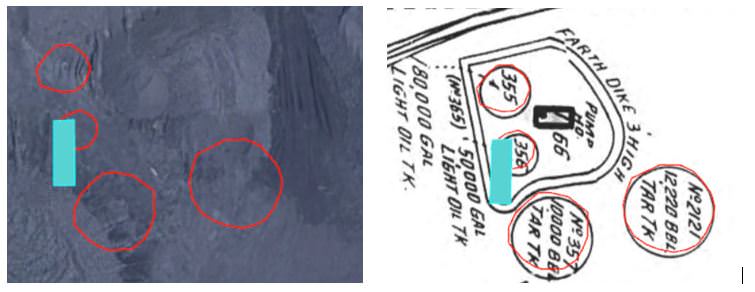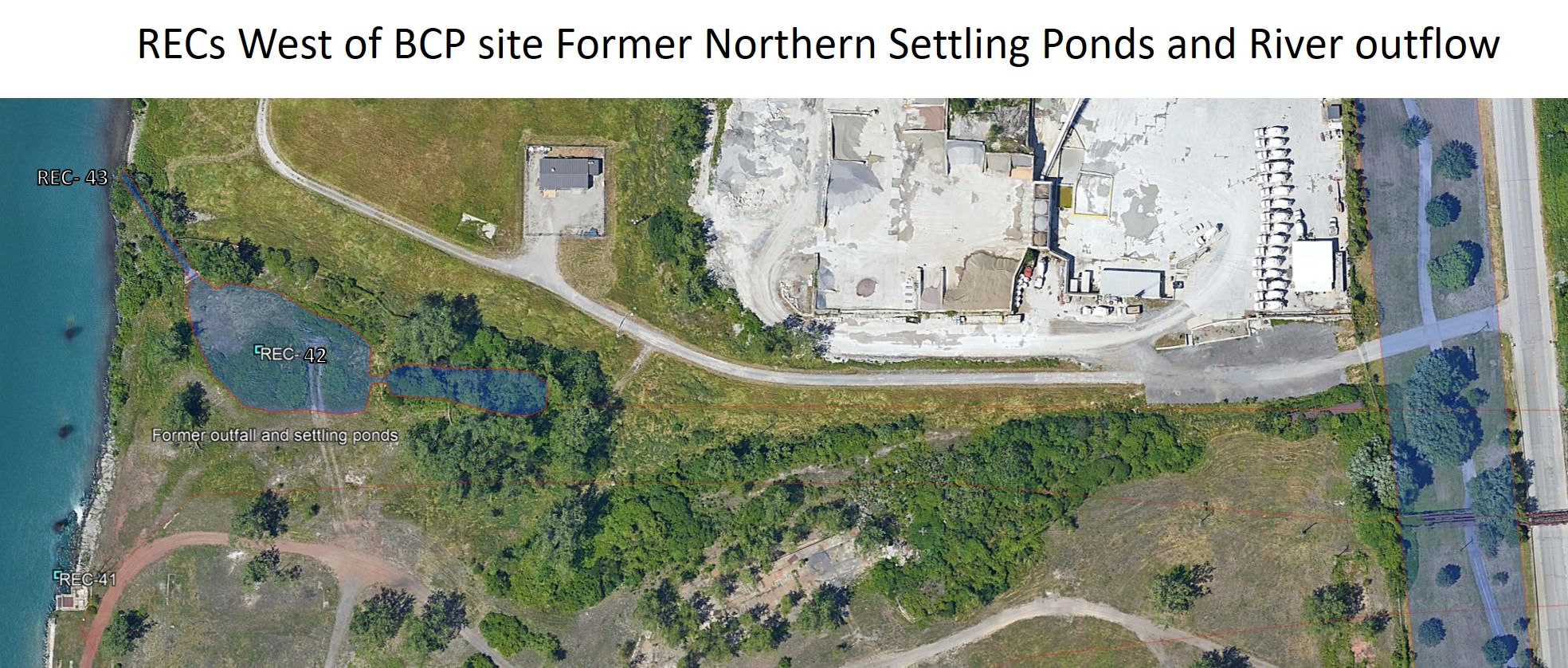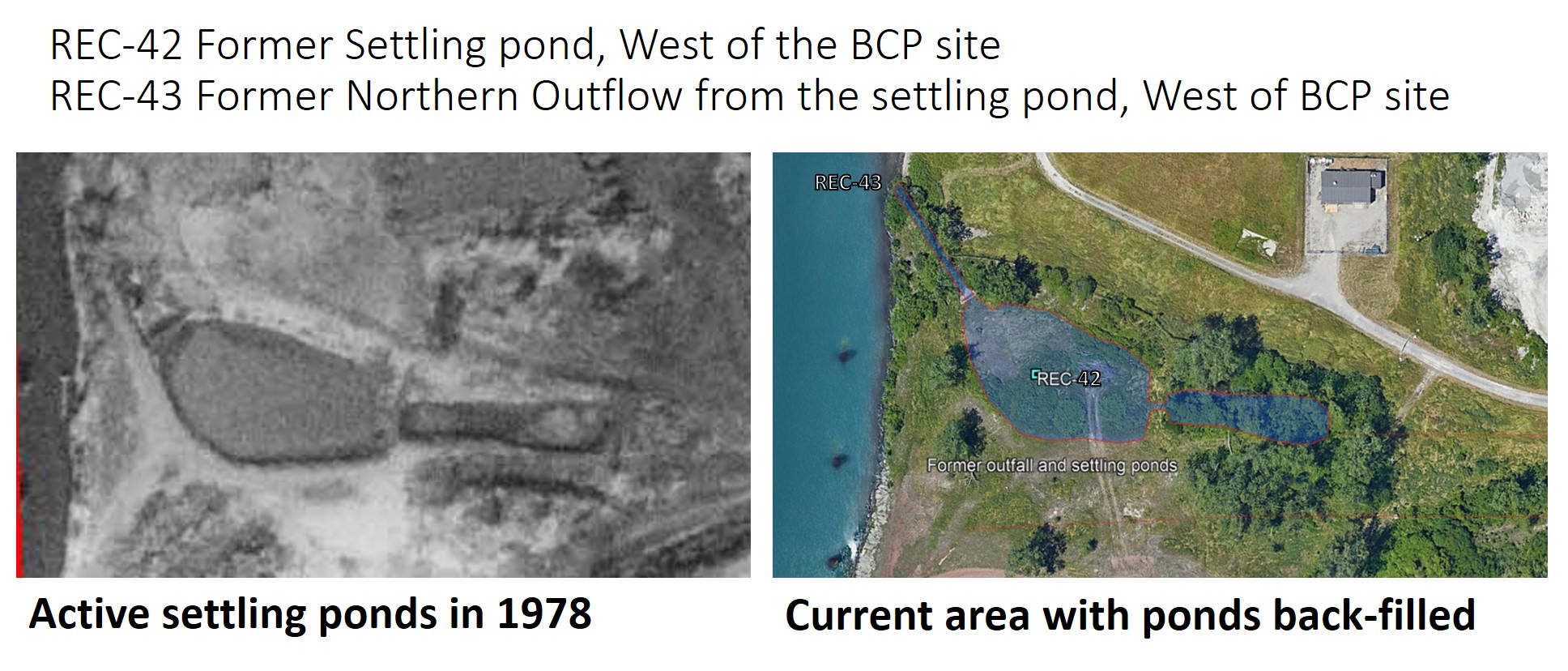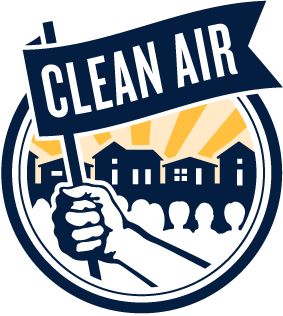Preocupaciones ambientales
- Visión general
- Cambios en el paisaje
- Uso industrial histórico
- Áreas de interés
- Preocupaciones ambientales
- Esfuerzos de remediación
Dado que cada edificio y proceso en el sitio está asociado con un tipo específico de contaminante, pudimos identificar las condiciones ambientales reconocidas (REC) que puede estar presente en este sitio. Una condición ambiental reconocida (REC) está definido por ASTM E1527-13 de la siguiente manera: La presencia o probable presencia de sustancias peligrosas o productos derivados del petróleo en, en, o en una propiedad: (1) debido a la liberación al medio ambiente; (2) en condiciones indicativas de una liberación al medio ambiente; o (3) en condiciones que representan una amenaza material de una futura liberación al medio ambiente. Las condiciones de minimis no son condiciones ambientales reconocidas..
Algunos ejemplos de REC en este sitio son:
Planta de Gas Agua que probablemente se utilizó para mejorar la calidad del gas fabricado que se recogía a medida que el carbón se descomponía en coque mientras estaba dentro de los hornos.. Los documentos de orientación del NYSDEC sugieren que uno de los desechos generados en el proceso de gas con agua carburada es el cianuro., posiblemente explica por qué se requirió que la instalación monitoreara históricamente el cianuro en sus descargas de agua al río Niágara.

Petróleo y alquitrán
Procesamiento de petróleo ligero y tanques son otra fuente potencial de contaminación en este sitio. El petróleo ligero producido en esta planta estaba compuesto por al menos 50% benceno.
Ferrocarriles y talleres mecánicos se utilizaron para dar servicio a los vagones de ferrocarril y al equipo pesado utilizado en el sitio. Antes de la década de 1940, Es probable que los aceites y disolventes utilizados fueran aromáticos de la operación de recuperación de benzol.. En tiempos posteriores, la mayoría de los talleres mecánicos pasaron a utilizar disolventes clorados. Aunque se desconoce tal movimiento en esta instalación., La presencia de alifáticos clorados en muestras recolectadas en trabajos de investigación anteriores del sitio sugiere que fueron utilizados en algún lugar del sitio., por lo que el taller de maquinaria es el lugar más probable para el uso de dichos compuestos.

Antiguo emisario norte

REC-42 y REC-43:
Se observaron dos estanques de sedimentación en la esquina noroeste de Roblin Steel Site en el 1978 foto aérea. Ambos estanques estaban ubicados en el terreno de la isla Rattlesnake, entre el canal lleno y el río Niágara.. Basado en información recopilada de un ex hidrólogo de la planta, este estanque de decantación era alimentado por una alcantarilla subterránea que recogía los residuos sanitarios y las aguas pluviales de la planta de coque.. El agua saldría de este estanque y entraría al río Niágara a través de un emisario.. Por 2002, sólo el estanque más pequeño estaba presente en una fotografía aérea. El estanque estuvo presente en el sitio a través de 2002 y fue completado antes 2006. El suelo debajo y cerca de los estanques puede incluir contaminación residual asociada con la sedimentación..
